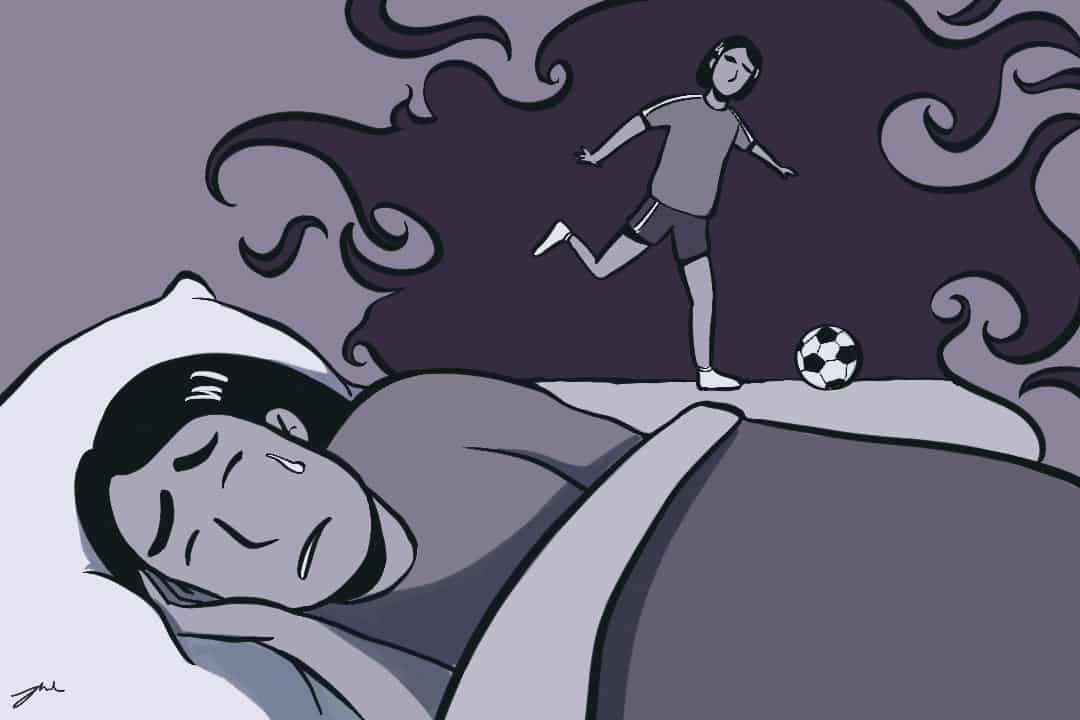Content warning: This article contains mentions of disordered eating habits due to sports-related pressures.
The mental health crisis taking place across the globe is of great concern to people of all ages and is quickly becoming one of the greatest public health issues of our generation. Children and adolescents are no strangers to this crisis, with one in five children and youth experiencing mental health struggles in Ontario.
Physical activity is a powerful tool to combat this crisis, as it is beneficial for the mental health of adolescents. For example, a statement from Psychology Today claims that youth athletes are less likely to experience mental health struggles than their non athletic counterparts. However, this data does not paint the whole picture.
The immense stress for those youth competing at higher levels can lead to increased pressure, and negative emotions around injuries can also lead to poor mental health.
Issues in specialization
Children may feel overwhelmed participating in competitive sports at such a young age and this can lead to serious physical and mental health problems. Early practices, multiple games in a short period of time, and intense training can all have a serious toll on children who are otherwise in a sensitive growth period of their life.
Overuse injuries are a growing cause for concern in youth athletes, especially those who compete in one or a handful of sports only — also known as specialization. One study in the The American Journal of Sports Medicine found that high school athletes who specialized in one sport for more than eight months of a year were at almost three times greater risk of knee injury than athletes who were less specialized.
The Varsity spoke with Alicia Abbott, a third-year U of T student who specialized in ballet in her youth. Abbott began competing in ballet from the age of four, training professionally from age 16 onward, before retiring at the age of 18 to focus on academics.
Abbott trained on a rigorous schedule: four hours a day, six days a week — for 14 years. This harsh routine took both a physical and mental toll on Abbott: “When I was in high school specifically, I really struggled with making friends because I was actively leaving school early to try and go to training and practices.” Abbott mentioned having to miss out on forming personal connections with her peers, even missing parties, in order to carve a path in professional ballet.
Friends she made in ballet were not always supportive either. “You’re constantly being watched by your friends — and even monitored by your friends. Like I remember I wouldn’t even feel comfortable eating in front of these girls.” Abbott recalled moments when she would eat a protein bar during practice, when peers would snatch the bar out of her hand and scold her. “‘Alicia, do you know what’s in it?’ And they’d read off the ingredients to me [and say] ‘you shouldn’t be doing that; you’re gonna be fat.’”
The Varsity also spoke to Alisa Skobevela, a first-year engineering student, who competed as a diver in Hungary before coming to U of T. Skobevela started training at a very young age.
Skobevela said that she felt “lucky” because her coaches and team were supportive of her, but still experienced hardships during her time in competition. Skobevela has lingering lower back pain because of the intense physical commitment involved in diving — she once had to take a year off from the sport to recover from the injury: “My body was just not prepared to handle high impacts.”
Lower back injuries are a major issue in young divers. The force of impact when jumping from such great heights can lead to “microtraumatic injuries” due to the immense stress it places on developing bodies. A study of Japanese elite junior divers in 2014 found that 37.3 per cent of subjects experienced lower back pain.
Improving the competitive environment
Clearly, there is more that can be done to foster a healthy environment in youth competitive sports. Beyond internal factors such as mental health issues and injuries from competition, we can start by promoting a supportive community amongst athletes. Hazing in sports — bullying amongst team members often against the will of the victim, and due to their new status in the team — is an issue at all age groups. Coaches and supervisors of teams should ensure that all members are safe and comfortable, and that they create a safe space where athletes feel comfortable coming forward with issues.
To Abbott, more support for youth athletes looks like improving access to mental health services. Moreover, she also advocated for more education on nutrition, “especially in sports that are forcing you to maintain a certain body weight or look a certain way. It’s really easy to develop unhealthy eating practices.”
Skobevela spoke about keeping youth athletes grounded in reality, so that they don’t “sacrifice their life for something that they won’t be able to achieve.” She talked about the difficult odds of truly becoming a professional athlete and said that it’s vital that children competing understand the difficulty, so they do not overexert themselves in a way they regret later.
Overall, youth sports are still a great way to stay active while also pursuing something you’re passionate about. I loved playing sports as a child, and while I was never good enough to compete at a meaningful level, my friends who did often spoke about the memories they made. I want more people to have memories like that, but I want to make sure they don’t have any regrets or trauma either. It’s of the utmost importance that children competing in sports are safe, healthy, and happy.


